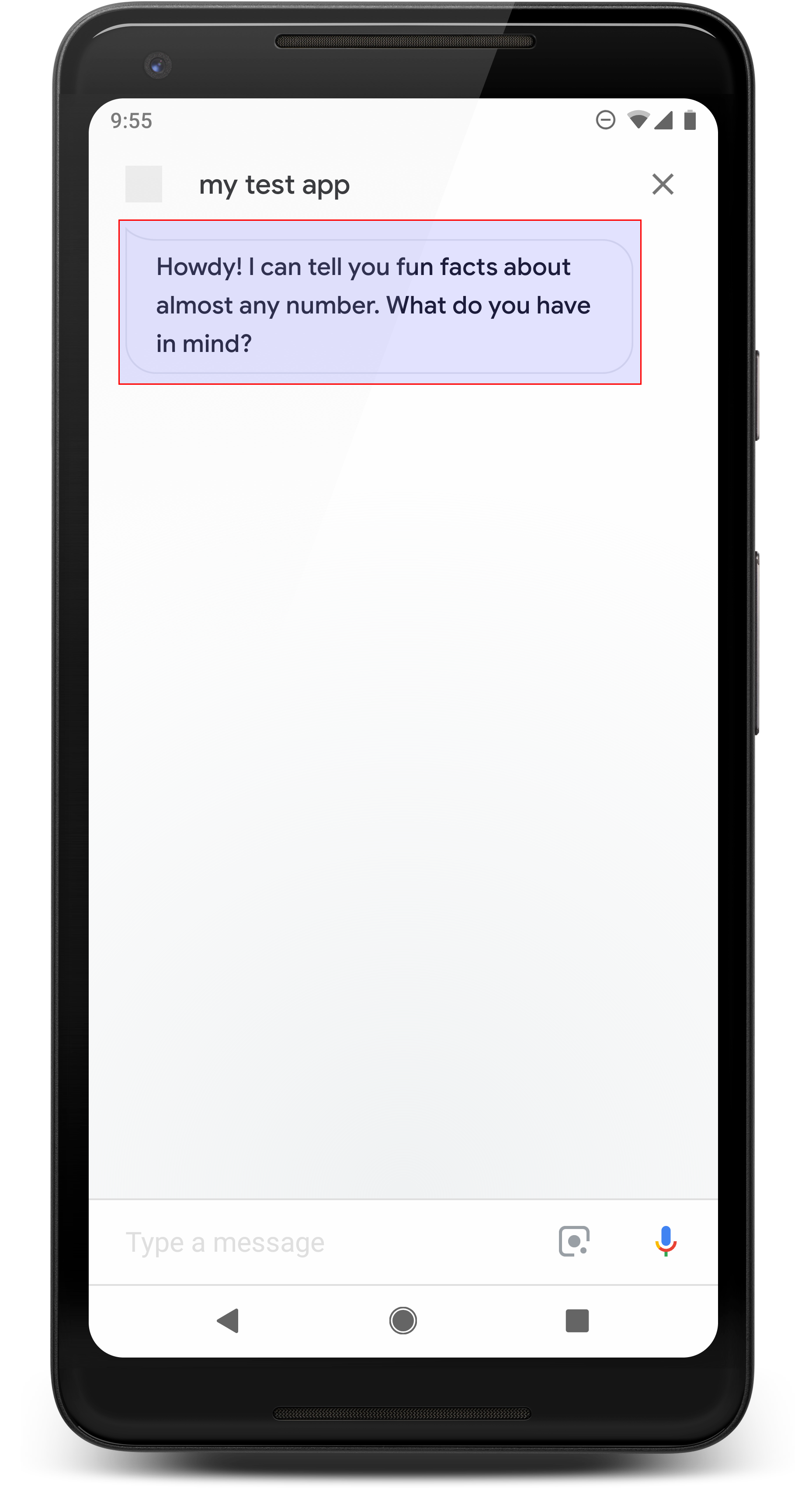
Respostas simples assumem a forma de um balão de chat visualmente e usam conversão de texto em voz ou linguagem de marcação de síntese de fala (SSML, na sigla em inglês) para som. Com o uso de abreviações respostas simples em uma conversa, você pode manter os usuários engajados com um visual claro e de áudio que podem ser combinados com outros elementos de conversa.
Em uma resposta simples, o conteúdo do balão do chat precisa ser um subconjunto fonético ou uma transcrição da saída de TTS/SSML. Isso ajuda os usuários a mapear o que sua ação fala e aumenta a compreensão em várias condições.
Em um comando, o texto que você fornece nos objetos first_simple e last_simple
usar as propriedades de uma resposta simples. O Google Assistente envia
respostas em um comando e, em seguida, envia a resposta avançada final para a fila de comandos.
Propriedades
O tipo de resposta simples tem as seguintes propriedades:
| Propriedade | Tipo | Requisito | Descrição |
|---|---|---|---|
speech |
string | Opcional | Representa as palavras a serem faladas para o usuário em SSML ou em conversão de texto em voz.
Se o campo override no comando que o contém for "true",
a fala definida neste campo substituirá
fala da solicitação. |
text |
string | Opcional |
Texto a ser exibido no balão do chat. Strings com mais de 640 caracteres são truncados na primeira quebra de palavra (ou espaço em branco) antes de 640 caracteres. Recomendamos usar menos de 300 caracteres para evitar que o conteúdo ultrapasse a tela, especialmente quando combinado com um ou outro elemento visual. Se ele não for informado, o Google Assistente vai renderizar uma versão de exibição
|

Código de amostra
YAML
candidates: - first_simple: variants: - speech: This is the first simple response. text: This is the 1st simple response. last_simple: variants: - speech: This is the last simple response. text: This is the last simple response.
JSON
{ "candidates": [ { "first_simple": { "variants": [ { "speech": "This is the first simple response.", "text": "This is the 1st simple response." } ] }, "last_simple": { "variants": [ { "speech": "This is the last simple response.", "text": "This is the last simple response." } ] } } ] }
Node.js
app.handle('Simple', conv => { conv.add(new Simple({ speech: 'This is the first simple response.', text: 'This is the 1st simple response.' })); conv.add(new Simple({ speech: 'This is the last simple response.', text: 'This is the last simple response.' })); });
JSON
{ "responseJson": { "session": { "id": "session_id", "params": {} }, "prompt": { "override": false, "firstSimple": { "speech": "This is the first simple response.", "text": "This is the 1st simple response." }, "lastSimple": { "speech": "This is the last simple response.", "text": "This is the last simple response." } } } }
SSML e sons
Use SSML e sons em suas respostas para dar mais polimento e melhorar o experiência do usuário. Consulte a documentação do SSML para mais informações.
Biblioteca de áudio
Fornecemos uma variedade de sons curtos e sem custo financeiro em nossa Biblioteca de sons. Esses os sons são hospedados para você, então tudo o que você precisa fazer é incluí-los em seu SSML.

